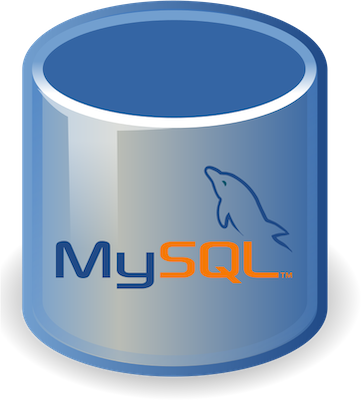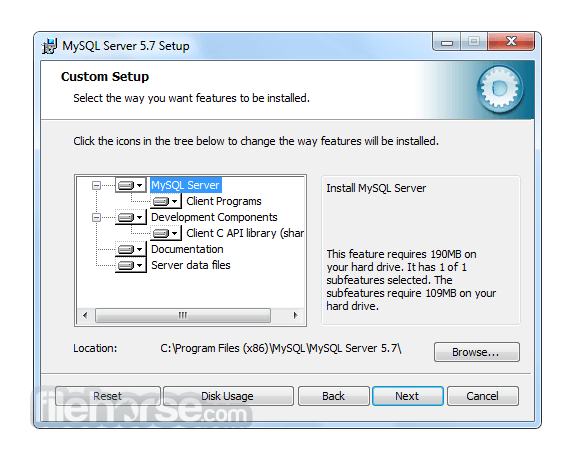
Mysql 5.7.21 For Mac

MySQL is a relational database management system. MySQL is the widely used database server in the world. This tutorial helps you to install MySQL database server on macOS Sierra 10.12 and High Sierra 10.13 and other supported versions using Homebrew.
Step 1 – Prerequisites
Mysql-5.7.21-macos10.12-x8664.dmg MySQL for Mac is designed for enterprise organizations delivering business critical database applications. It gives corporate developers, DBAs and ISVs an array of new enterprise features to make more productive developing, deploying, and managing industrial strength applications. MySQL Change a User Password last updated January 16, 2018 in Categories BASH Shell, CentOS, Database, Fedora Linux, FreeBSD, HP-UX Unix, Linux, Mac OS X, MySQL, RedHat and Friends, Solaris, Suse, Ubuntu Linux, UNIX.
Before starting the installation of MySQL using this tutorial you must have the following prerequisites
- Terminal: You must have Mac Terminal access and little knowledge about working with the terminal application.
- Homebrew: Homebrew is a popular package management tools used for installing most open source software like Node. Here is the Homebrew installation tutorial
Step 2 – Install MySQL on macOS
At this time of writing this tutorial, Homebrew has MySQL 5.7.21 version in its main repository. Start a terminal and run command to install MySQL:
Wait for the installation process finish. Now you just need to configure things so that your MySQL server is auto-started
Also, you have to set a strong password for the MySQL root account. Cyansoft macserverip 9.0 for mac. Use the following command to set a new password. Make sure to use a strong password.
Step 3 – MySQL Configuration
MySQL server has been installed on your system. The binary files are installed under /usr/local/bin directory and all the MySQL related files are created under “/usr/local/var/mysql” directory. The main confiugration file is created at:
You can use above file to customize your MySQL server. Now, Connect to MySQL server using the command:
Step 4 – Manage MySQL Service
There are mysql.server command available under /usr/local/bin directory, which is used to manage MySQL service. You can use mysql.server command with options status, stop, start, or restart MySQL service on your system.
All done. You have running MySQL server on your system. What next? Visit our MySQL tutorial section to create and manage databases from the command line.
Re: MySQL 5.7.21 for Mac OS X 10.13 (High Sierra) Preference Pane will not load

Posted by: Antonio De Marchi
Date: January 25, 2018 05:01AM
Date: January 25, 2018 05:01AM
Same problem here after installing 5.7.21. Tried also with new update MacOS X 10.13.3 but nothing changed
Options:Reply•Quote
Written By
MySQL 5.7.21 for Mac OS X 10.13 (High Sierra) Preference Pane will not load
January 23, 2018 05:52PM
Re: MySQL 5.7.21 for Mac OS X 10.13 (High Sierra) Preference Pane will not load
January 24, 2018 09:35PM
Re: MySQL 5.7.21 for Mac OS X 10.13 (High Sierra) Preference Pane will not load
January 25, 2018 05:01AM
Re: MySQL 5.7.21 for Mac OS X 10.13 (High Sierra) Preference Pane will not load
January 25, 2018 08:35AM
Re: MySQL 5.7.21 for Mac OS X 10.13 (High Sierra) Preference Pane will not load
January 29, 2018 06:53AM
Re: MySQL 5.7.21 for Mac OS X 10.13 (High Sierra) Preference Pane will not load
January 29, 2018 10:40AM
Re: MySQL 5.7.21 for Mac OS X 10.13 (High Sierra) Preference Pane will not load
January 30, 2018 08:04AM
Re: MySQL 5.7.21 for Mac OS X 10.13 (High Sierra) Preference Pane will not load
January 31, 2018 06:54AM
Re: MySQL 5.7.21 for Mac OS X 10.13 (High Sierra) Preference Pane will not load
March 30, 2018 05:18PM
Sorry, you can't reply to this topic. It has been closed.
Content reproduced on this site is the property of the respective copyright holders. It is not reviewed in advance by Oracle and does not necessarily represent the opinion of Oracle or any other party.